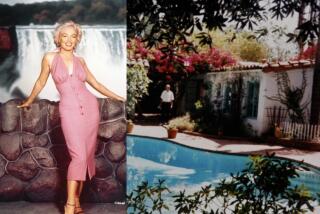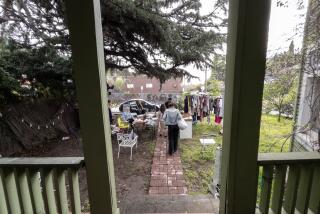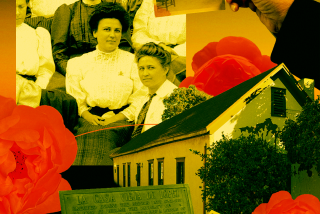BUENA PARK : Historical Park Will Let City Revisit Its Past
Though it has only been incorporated since 1953, the city has a much longer history, evidenced by buildings dating back to the 1880s.
To preserve that heritage, the city’s Redevelopment Agency and the local historical society banded together last year to create a historical district park, which will open this weekend with a dedication ceremony Sunday.
Across from City Hall on Beach Boulevard, the half-acre district includes the 1888 First Congregational Church, the old Stage Stop Hotel, the Whitaker-Jaynes house and an 1850s squatter shack called the Bacon House.
The latter two were moved in June, 1994, as part of a $568,000 project by the Redevelopment Agency.
Dee Cavenee, the historical society’s curator and, at 37, one of its youngest members, said she has mixed feelings about the new park.
“I love the fact that the house is here and that people are paying attention to it,” she said as she unwrapped donated silver pieces to display on a sideboard. “But the original location was the original site.”
The two-story, four-bedroom home, built by Andrew W. Whitaker in 1887, will be a museum in the new district. It was moved from Manchester Avenue to make way for Toyota of Buena Park.
The home of the community’s founder, Chicago grocer James A. Whitaker, was demolished in the 1970s and replaced by an office building, Cavenee said.
“We tried to save it,” said Nickie Jeannerette, the historical society’s past president and a longtime member. “But it had been moved from its original location too, and I guess [the city] figured two old houses were enough.”
But Jeannerette and the other few active members of the society, which has a roster of 75, are not looking back.
“We hope to grow by location,” Cavenee said. “We’re a historical district now as opposed to a historical house.”
Restoring the old homes will be a continuing project for society members, who at midweek were still moving packing boxes and arranging furnishings for Sunday’s opening.
The hardwood floors are covered with 1960s-era red carpeting, and that will remain until more money is available, Cavenee said.
The furnishings are authentic but not original to the homes. A carved mahogany bedroom set was donated by the Knott family, and other antique lamps, sewing machines, and items came from antique marts.
“We’re looking forward to great things here,” Jeannerette said.
More to Read
Sign up for Essential California
The most important California stories and recommendations in your inbox every morning.
You may occasionally receive promotional content from the Los Angeles Times.










